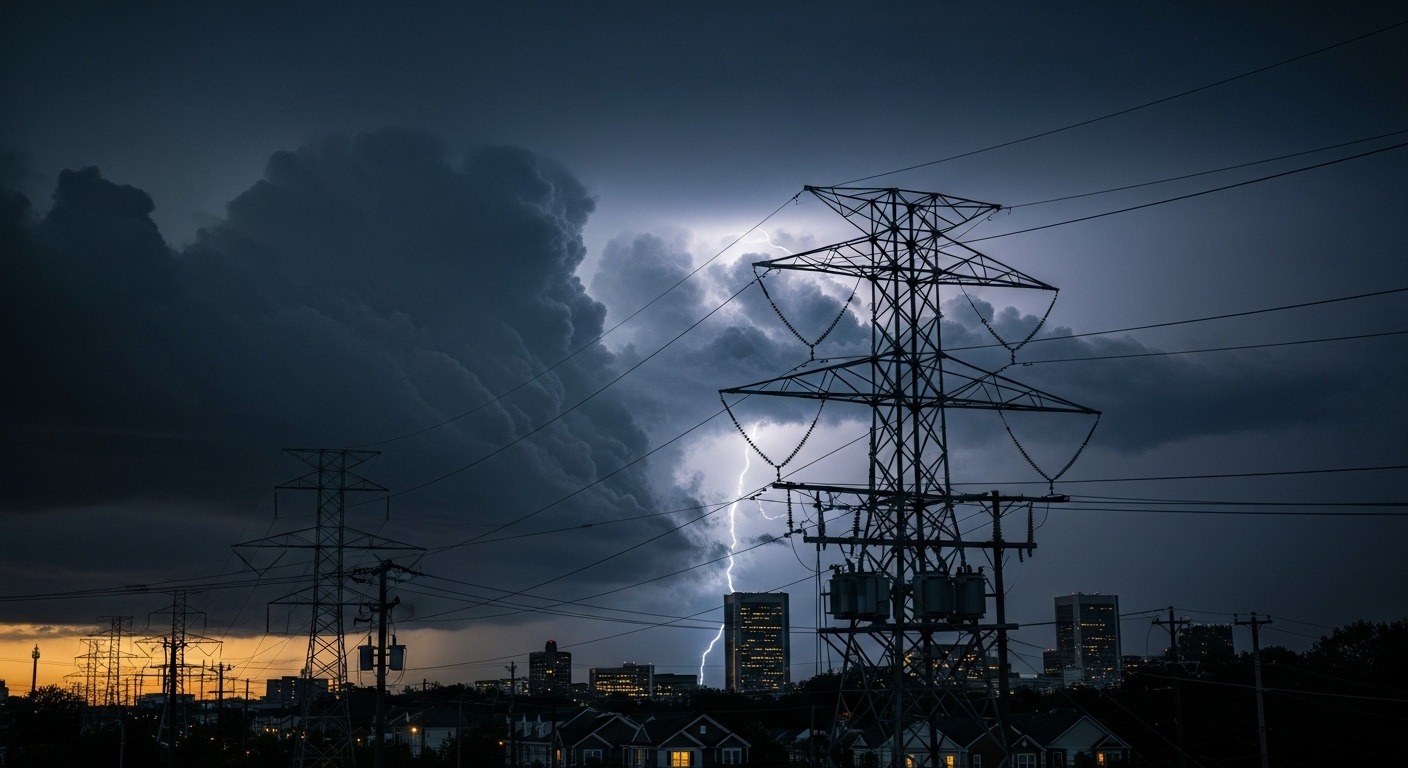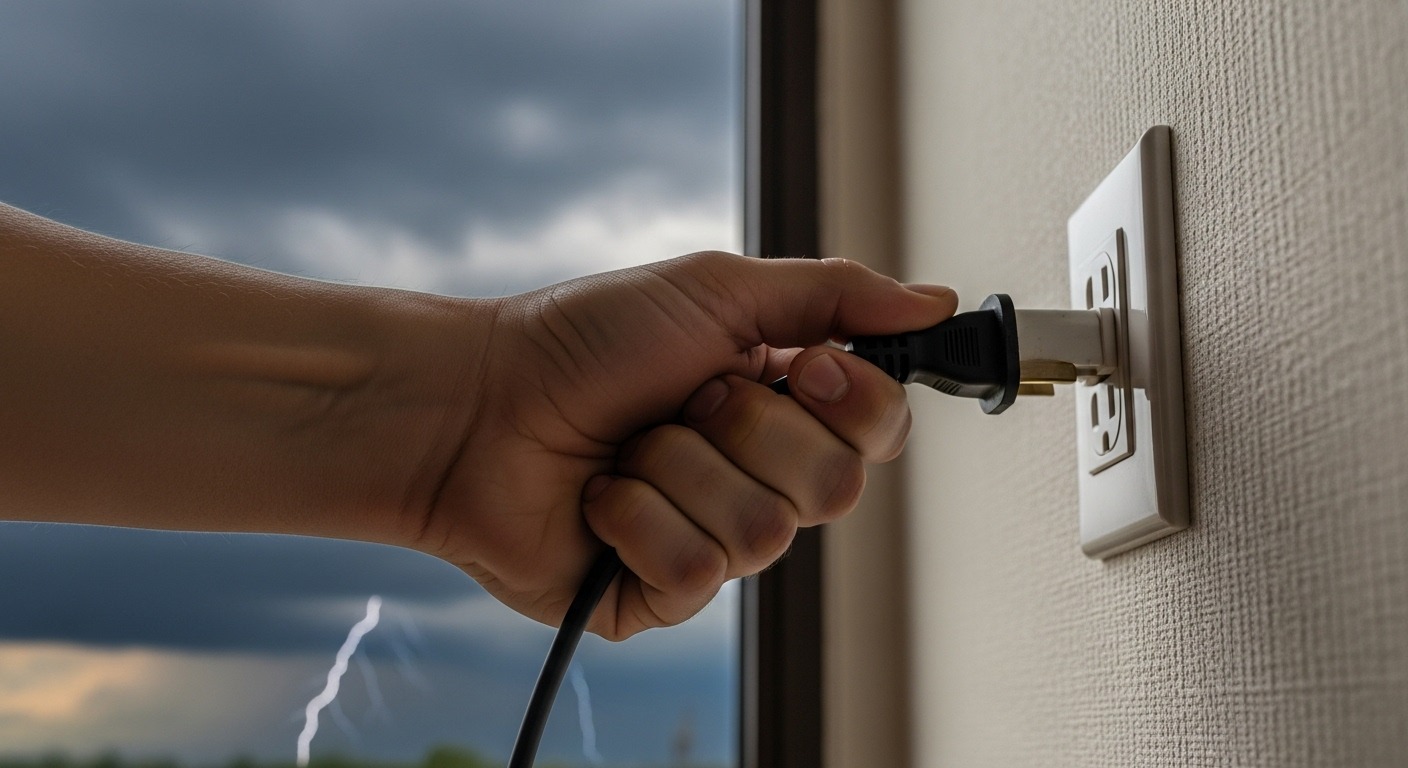Richmond Appliance Hurricane and Storm Preparedness: How to Protect Your Major Appliances Before, During, and After Severe Weather (Plus Emergency Recovery Steps)
Worried about your expensive appliances getting fried during Richmond’s next big storm? Follow our comprehensive guide to learn exactly how to protect your refrigerator, washer, dryer, and other major appliances from power surges, flooding, and severe weather damage—plus what to do if disaster strikes.
Picture this: you’ve just weathered a major storm in Richmond, the power flickers back on, and suddenly you hear that dreaded sound—nothing. Your refrigerator isn’t humming, your washing machine won’t start, and that expensive HVAC system you just installed last year? Toast. I’ve been there, and trust me, it’s a gut-wrenching feeling that can easily be avoided with the right prep work.
Living in Virginia means we get to enjoy beautiful seasons, but it also means dealing with our fair share of severe weather. From tropical storms rolling up from the coast to those surprise severe thunderstorms that pop up out of nowhere, our appliances are constantly under threat. The good news? Most storm-related appliance damage is totally preventable if you know what you’re doing.
After talking to local appliance repair pros, insurance adjusters, and having my own close calls with storm damage, I’ve put together this comprehensive guide that’ll walk you through everything you need to know. We’re talking pre-storm prep, what to do when the weather hits, and how to handle the aftermath like a pro. Because let’s be real—replacing all your major appliances isn’t exactly in anyone’s budget.
- Power surges cause more appliance damage than flooding during storms, but they’re completely preventable with proper preparation
- Simply unplugging non-essential appliances before storms begin provides better protection than any surge protector on the market
- Water-damaged appliances exposed to saltwater or sewage must be replaced entirely—repair isn’t safe or cost-effective
- Whole-home surge protectors cost $50-$500 but can prevent thousands in appliance replacement costs
- Proper documentation before storms can speed up insurance claims by weeks and increase settlement amounts significantly

Understanding Richmond’s Unique Weather Risks and Appliance Vulnerabilities
Let me start with something that might surprise you—Richmond’s aging electrical grid makes us particularly vulnerable to power surge damage. That innocent little flicker you see during storms? It’s actually a massive voltage spike racing through your home’s wiring, and it can absolutely destroy your expensive appliances in milliseconds.

Our location in central Virginia puts us right in the path of storms coming up from the Atlantic, but we also deal with severe thunderstorms that can pop up with minimal warning. The combination of aging infrastructure and unpredictable weather patterns creates a perfect storm (pun intended) for appliance damage. I’ve seen neighbors lose thousands of dollars worth of appliances in a single storm because they didn’t realize how vulnerable their gear really was.
What makes this situation even trickier is that Richmond’s power grid often experiences multiple restoration attempts during major outages. Each time the power tries to come back on and fails, it sends another surge through the system. It’s like your appliances are getting hit with electrical haymakers over and over again. The power restoration process itself can be more dangerous than the initial outage.
Richmond homeowners need to understand that storm damage isn’t just about wind and rain—it’s about the electrical chaos that happens when severe weather hits our power infrastructure. Modern appliances are packed with sensitive electronic components that simply can’t handle the voltage fluctuations that happen during and after storms. Your grandmother’s old refrigerator from 1985 might survive a power surge, but that smart appliance with Wi-Fi connectivity and digital controls? It’s toast.
Pre-Storm Preparation: Your First Line of Defense
The absolute most important thing you can do to protect your appliances starts days before any storm hits Richmond. This isn’t about running around in a panic when the weather alerts start going off—this is about having a solid game plan that becomes second nature.
First up: documentation. I cannot stress this enough—take photos of every single major appliance in your home right now. Not tomorrow, not when a storm is forecast, but today. Get clear shots that show model numbers, serial numbers, and the overall condition of each appliance. Store these photos in the cloud because if your house takes a hit, your physical documents might be gone too. Insurance adjusters move way faster when you can show them exactly what you had and what condition it was in before the storm.
Next, let’s talk about the single most effective protection strategy that costs absolutely nothing: unplugging your appliances. Seriously, this one step provides better protection than any surge protector you can buy. When Consumer Reports experts talk about appliance protection, they consistently emphasize that unplugging devices before storms begin beats every other protection method hands down.

Here’s my personal unplugging strategy that’s saved my appliances multiple times: as soon as I see severe weather in the forecast, I unplug everything that isn’t absolutely essential for safety. That means the microwave, coffee maker, entertainment system, computer equipment, and even smaller appliances like the toaster and blender. The only things I leave plugged in are the refrigerator (which I set to the coldest setting), essential lighting, and maybe one device for emergency communication.
For appliances you can’t unplug—like your central air conditioning or built-in oven—this is where surge protection becomes critical. But here’s the thing: not all surge protectors are created equal. Those cheap power strips from the grocery store? They’re basically useless against the kind of surges that happen during major storms. You need surge protectors rated for at least 2,000 joules, and even better, invest in a whole-home surge protector installed at your main electrical panel.
Gas Appliances Require Special Attention
If you’ve got gas appliances in your Richmond home, there’s a specific protocol you need to follow that’s different from electric appliances. Never—and I mean never—attempt to turn off the main gas supply at the meter. That’s strictly utility company territory, and if you mess with it, you might not be able to get gas service restored quickly.
Instead, focus on individual appliance shutoffs. Turn off pilot lights on your water heater, furnace, and gas range. If you’re not sure where these controls are, now is the time to figure it out, not when a storm is bearing down on you. Most gas appliances have individual shutoff valves located near the appliance itself—learn where these are and how to operate them safely.
Appliance-Specific Preparation Strategies
Different appliances need different prep strategies, and getting this right can mean the difference between minor inconvenience and major expense. For refrigerators and freezers, set them to their coldest settings a few days before the storm. This gives your food the best chance of staying safe if you lose power for extended periods.
Your washing machine needs a hose inspection—seriously, when’s the last time you looked at those rubber hoses behind your washer? If they’re more than five years old or showing any signs of cracking, replace them now with steel-braided hoses. A burst washing machine hose during a storm can cause thousands in water damage, especially if your washer is on an upper floor.
Don’t forget about your dryer—clean out that lint trap and the entire exhaust vent system. Lint buildup is a major fire hazard under normal circumstances, but when electrical systems are stressed during storms, that risk goes through the roof. Dryer fires are more common than most people realize, and storm conditions can trigger them in previously safe installations.
Power Surge Protection: Your Electrical Safety Net
Let’s dive deep into surge protection because this is where a lot of Richmond homeowners get confused. Power surges happen when voltage suddenly spikes above the normal 120 volts that most household circuits carry. These spikes can come from lightning strikes, utility company switching operations, or even just the power coming back on after an outage.

Here’s what blew my mind when I first learned about it: even whole-home surge protectors can’t protect against direct lightning strikes. If lightning actually hits your house or the power lines feeding your house, you’re probably going to have some damage no matter what. But the good news is that direct strikes are relatively rare—most surge damage comes from nearby lightning or
